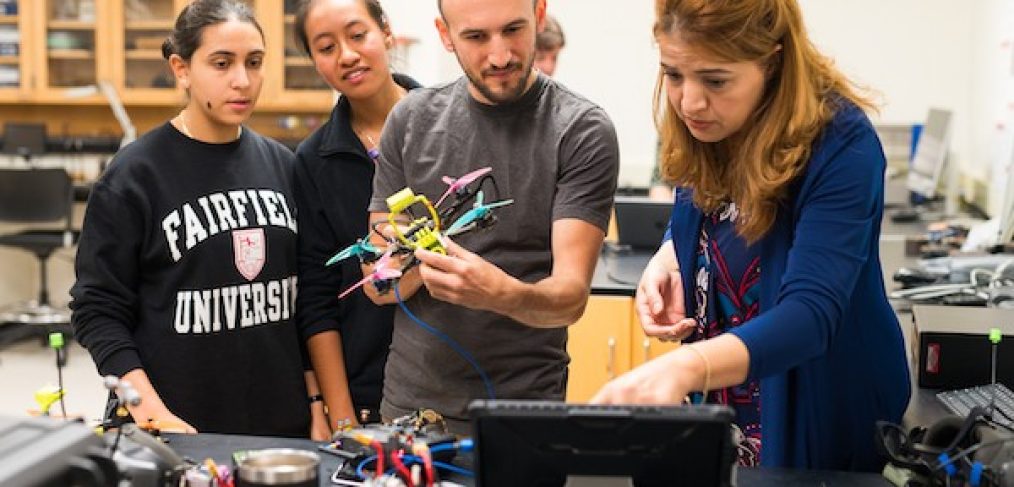
Connecticut Space Grant Consortium Awards ’24 – ’25 Grants to Fairfield Faculty and Students
Grants in the 2024-25 funding cycle will advance research on topics ranging from examining the behavioral and neurobiological impacts of confinement to cognitive workload analysis via deep learning.
The NASA Connecticut Space Grant Consortium (CTSGC) has awarded Fairfield University School of Engineering and Computing and the College of Arts & Sciences with eight research grants to fund research and design projects this year.
In spring of 2024, associate professor electrical and biomedical engineering Djedjiga Belfadel, PhD; professor of chemistry John Miecznikowski, PhD; assistant professor of psychology Karl Schmidt, PhD; professor and chair of computer science Xiaoli (Lucy) Yang, PhD; Madeleine Biardi ’27, John Chiodo ’24, Ethan Chow ’27, and Brody Matijevic ’25 received research grants.
Dr. Schmidt’s research study, “Behavioral and Neurobiological Impacts of Confinement” examines whether confinement changes brain systems and behaviors to increase the behavioral effects of drugs of abuse. These increased behavioral effects are associated with increased risks of addiction-like behaviors. “Essentially, my laboratory uses rodent models to study the effects of stress and drugs of abuse,” said Dr. Schmidt. “Exposure to small spaces is a stressor for both humans and rodents alike. People in space, whether astronauts on missions or space tourists, are confined to small spaces during life on the shuttle.”
Dr. Yang received funding for her research entitled “Cognitive Workload Analysis via Deep Learning with Emotion Regulation and Virtual Reality for Aeronautics Safety Application.” Physiological sensing is crucial for aeronautics safety, evaluating cognitive workload in tasks. Deep neural networks evaluate cognitive states through EEG data, and enhancing well-being by integrating emotion recognition with VR-based regulation. This research integrates physiological assessment and emotion recognition to measure workload using VR and EEG signals.
Read the full story on https://www.fairfield.edu/
Image Credit: Fairfield.edy
Author Credit: www.fairfield.edu

